 Do you ever catch yourself thinking about starting a podcast? Well, now’s the time to think a little less and start doing a little more. If you’re bouncing back and forth between podcast ideas, that’s okay. Deciding the kind of content you want to curate and bring to your audience isn’t an easy task. So let us help you!
Do you ever catch yourself thinking about starting a podcast? Well, now’s the time to think a little less and start doing a little more. If you’re bouncing back and forth between podcast ideas, that’s okay. Deciding the kind of content you want to curate and bring to your audience isn’t an easy task. So let us help you!
In this article, we’ve brought together a few out-of-the-box and interesting ideas to stoke the creative fires of your imagination. Use these as a springboard or take them and go!
Here’s a pro-tip in the meantime: If you can talk about it, you can podcast about it. Literally, anything you can come up with can be translated into an episode, season, or podcast.
1. Short Stories
Write your own or enlist the help of published authors (after you get their permission). Collect all different kinds of stories from around the world. Try dedicating different episodes to different genres like fairy tales, murder mysteries, children’s stories, folklore, etc.
2. DIY
Who doesn’t love a good DIY? If money’s tight or you just can’t seem to find what you’re looking for in stores, make it yourself! Talk about how to make furniture from cinder blocks, install shelves or arts and crafts for the kids, all with your own two hands and a little ingenuity.
3. Product Reviews
Ever wonder if a Dyson hairdryer is actually worth investing in? Swap real-world bits of information, reviews, and first-hand experience of the products people are curious to try.
 4. Advice
4. Advice
Instead of the age-old column, get real feedback in the here and now with an advice podcast that covers a broad range of topics. Try a car-related podcast or get intimate with love and relationships. Provide well-researched real estate advice or get serious about how to raise children and how to parent effectively.
5. Share a Coaching Session
If you’re a coach, consider sharing a recording of your session (with your client’s permission of course!). Whether from a small group or 1:1, if you had a breakthrough session, share it with the world. Let them know what it is you do and don’t forget to include your information.
6. Surviving the Great Outdoors
There’s no shortage of things to discuss when you’re unraveling the mysteries, complexities, and expansiveness of Mother nature herself. You can dive deep into topics like family-friendly locations, expert gear, best adventures, and more.
7. Favorite Things
Bring on guests and get people to share the things that make their life better. In other words, their favorite things like bands, cars, coffee, cities, anything big or small!
8. Guided Wellness
Lead and produce meditations, chants, and affirmations that can be used across a variety of situations: sleep hygiene, heart-opening inspiration, calmness, high anxiety, etc. Bring on different experts to talk to the topic or lead a meditation. Lead short mini-meditations, or go for longer sessions, whichever your audience is asking for.
9. Book Synopsis
We all have a list of books we want to read. Some people can get through it, but for the rest of us, it sure would be awesome to get the shortened version of the classics! Have a conversation around popular books that discuss the highlights, themes, and plots of the literature people want to read.
10. Psychology
The science and spirituality behind how the brain and mind intersect are far-reaching and fascinating. Zone in on different schools of thought from leaders like Jung and Freud, or branch out to eastern philosophy and other forms of therapy for a well-rounded take.
11. Other Ways Of Living
Between tiny homes, digital nomading, growing your own vegetables, and more, there is a surplus of ways to live this one life. Cover a few, or cover all of them on your podcast. Invite a guest who’s passionate about making their own kombucha or talk about what it’s like to tear down a school bus and make it a beautiful living space!
12. Paranormal Oddities
People can’t get enough out-of-this-world stuff. Anything from a “glitch in the matrix” to haunted hotels to creepy sightings will get people talking and listening.
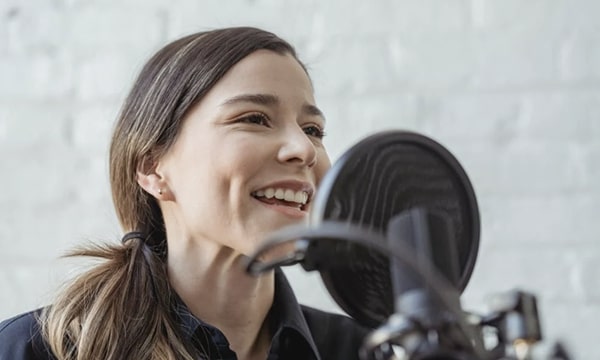 13. Starting A Business
13. Starting A Business
Especially during a pandemic, entrepreneurship has never been more alive. Side gigs, hustles, working multiple jobs to have multiple streams of income, it’s all part of the world we live in. Discuss how to scale, network, and really launch into the next level of success.
14. How To Brand
In the age of individuality and standing out in the crowd, branding isn’t only for big companies. In fact, it can be for everyone and definitely for the individual. Talk about how it affects your online presence, and getting a job. Loop in marketers, and designers and get chatting about what makes for a successful and well-liked brand.
15. What to Watch
With so many TV shows, movies, short films, and docs literally at our fingertips, it’s overwhelming to know what to watch. Get straight to the good stuff when you can listen in to what people have to say about the latest and greatest.
16. How to Podcast
Seriously. The medium is the message here, so why not use it to its full advantage? Share what you know or learn from others. By swapping hacks, tips, and learning how to write scripts, and more, your passion and know-how grow exponentially.
17. Writing and Writers
Team up with wordsmiths and penners to trade ideas, work on scripts, and discuss what makes for a good piece of writing. Chat about different styles, and structures or break down how to develop a daily writing practice.
18. Aging Gracefully
What’s it like to find the first wrinkles on your face or becoming a grandparent for the first time? What about retirement savings or becoming a “snowbird?” Bring this up for discussion and see what your audience has to say.
19. Pop Culture Trends
With TikTok and a vast expanse of social media, trends are popping up every minute! Have a podcast that talks about what’s happening right now. Compare and contrast, dissect and ridicule or just plain have fun with whatever the kids (and adults) are doing these days!
With TalkShoe, you have the tools to create a million different podcasts. You can speak to any topic your mind can think of. Get serious or stay playful. Bring on guests or go solo. Collaborate overseas or bring in a co-host from the same city. Use the virtual recording studio to add in effects and give you high-quality and unadulterated sound. Learn more about TalkShoe here.
 As someone who regularly engages with new and first-time podcasters, I am frequently asked how much preparation should be done before hitting record. Often, these inquiries include a question about scriptwriting. Should episodes be completely scripted to ensure that material is covered as intended? Or, should they be recorded on-the-fly to sound more natural?
As someone who regularly engages with new and first-time podcasters, I am frequently asked how much preparation should be done before hitting record. Often, these inquiries include a question about scriptwriting. Should episodes be completely scripted to ensure that material is covered as intended? Or, should they be recorded on-the-fly to sound more natural?
Personally, I recommend a combination of both. However, there are pros and cons to each and as a podcast host, you will have to determine what works best for you. Read on for a more in-depth look at each of these methods.
Entirely Scripted
Using this option, the podcast host prepares all of their content in advance and reads from a script during their recording. The benefit of having an entirely scripted episode is that your content will be covered exactly as intended. You will never need to worry about forgetting an important piece of information, or trying to properly articulate your thoughts. If you’re finding this process a bit challenging, try checking out Quill, an online service that can match you up with a professional script writer who is perfect for you and your podcast.
The downside to following a script is that your recordings may SOUND scripted to your listeners who are expecting a more natural flow of conversation. If you do feel most comfortable using this method, I recommend practicing your content out loud several times before hitting record. Making notes in your script about specific inflections to use or where to insert a pause can be helpful as well.
On-the-fly
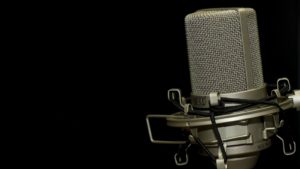 For those who are confident in their ability to think on their feet, the completely unscripted option is the right choice for you. One of the benefits is that your content does not come across as forced or monotone. It also leaves room for spontaneous inspiration and discussion during the podcast.
For those who are confident in their ability to think on their feet, the completely unscripted option is the right choice for you. One of the benefits is that your content does not come across as forced or monotone. It also leaves room for spontaneous inspiration and discussion during the podcast.
An obvious risk that you take with this method is forgetting what you wanted to say. As thoroughly as you might know a topic, it is easy to miss something when you’re caught up in the moment. Because of this, my advice is always to jot down a few main points that you wish to discuss. You will be glad that you have it if you find your mind going blank in the middle of a recording. If it does, don’t feel bad! It happens to the best of us.
 The Basic Episode Plan
The Basic Episode Plan
The approach that I have settled on is a combination of the two methods. Before I record an episode, I create an outline of the main points that I wish to discuss and list them in an order that makes sense. The benefit of this method is that you will cover all intended material and still sound natural and conversational.
Focus on content – We’ll take care of the rest!
Here at TalkShoe, we know how much work goes into each and every episode that you record. Because of that, we are proud to offer a podcasting platform that eliminates much of the heavy lifting. With FREE unlimited hosting and storage, easy to use RSS feeds, and lots of cool extras, the TalkShoe platform lets you focus on the most important aspect – your content.
With so many options available out there, purchasing a microphone for your podcast can feel like an extremely daunting and overwhelming task. That’s why we’ve created this guide of our top choices to fit within any budget. Whether you’re just starting out and looking to purchase your first microphone, or a seasoned pro looking to upgrade your hardware, this guide has got you covered.
First, consider directionality
When selecting a microphone, it is important to plan ahead for the number of people that you intend to have on your show at one time. If you will always be recording solo, a microphone with a cardioid pickup pattern (records from one side only) will be sufficient. If you will be having more than one person on your show, a bi-directional microphone (records from both ends) or omnidirectional microphone (records from all sides) will be needed.
Low Budget
This compact and portable USB microphone is perfect for podcasting on-the-go. The unique design allows for it to be clipped onto a laptop or sit upright on a flat surface. You can select the pickup pattern, either cardioid or omnidirectional, depending on your specific needs at that time.
Recommended by podcasting expert Sam Laliberte from the Freedom Lifestyle Podcast, this USB microphone is the perfect option if you are looking for crystal clear audio quality and plan on recording alone.
Medium Budget
One unique benefit to this microphone is its supercardioid pickup pattern which reduces background noise for extremely clear audio recordings. Although promoted as a gaming microphone, it is highly effective for podcasting as well.
One of the most popular microphones on the market is the Blue Yeti. This USB microphone is incredibly versatile as it offers cardioid, bidirectional and omnidirectional pattern selection. It also comes with a stand, so you don’t need to worry about purchasing additional accessories.
High Budget
This broadcast-quality dynamic cardioid microphone is an excellent choice if you have a bit more money to spend on equipment. One unique feature that it offers is an internal pop filter that minimises harsh plosives which can distort your audio.
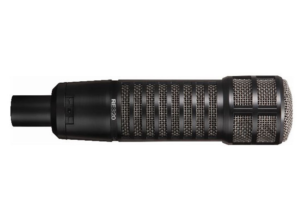 RE320 - $340
RE320 - $340
☆☆☆☆☆
This professional-grade dynamic microphone is our personal favourite! We like it so much that you can find 4 of them set up and ready to capture your audio in incredible detail at the TalkShoe recording studio in downtown Toronto.
Live in Toronto? Come and use our equipment!
If you live near the city and want to avoid the hassle of purchasing your own microphone, the TalkShoe recording studio inside Stackt Market provides everything that you need for FREE. The space has been outfitted with professional recording equipment provided by Remenyi House of Music and Electrovoice for an excellent sounding podcast every time. So, what are you waiting for?
 Companies looking to reach the growing global podcast audience have been creating their own shows, known as branded podcasts. These podcasts are an extension of the brand and can be created for several important reasons such as thought leadership, having control over your brand, and creating positive engagement around your brand. Usually, these types of podcasts are created in-house and your company is fully responsible for the content, including any references to your brand’s products/services.
Companies looking to reach the growing global podcast audience have been creating their own shows, known as branded podcasts. These podcasts are an extension of the brand and can be created for several important reasons such as thought leadership, having control over your brand, and creating positive engagement around your brand. Usually, these types of podcasts are created in-house and your company is fully responsible for the content, including any references to your brand’s products/services.
Here are a few ways companies can benefit from having a branded podcast:
Branded podcasts give your company more control
The first way branded podcasts are beneficial to your company is that you have full control over your content in contrast to inserting ads in other podcast shows. Since the brand creates all of the content in the podcast series you can decide how you share the brand with audiences. Your company can strategically place these brand mentions within an episode which could provide a more effective way for listeners to understand the usefulness of your products or services.
By creating your own podcast, a brand can pick and choose how, when, and where to advertise their products or services within the episodes. These product plugs can be done in a way that’s obvious or in a way that is more discreet.
An example of a company using a branded podcast to have full control over their messaging is The Message podcast by General Electric (GE). “The Message” is a science fiction podcast in a journalistic style. In the podcast, scientists work to decode extraterrestrial messages using real technology developed and sold by GE. This is a great example of how GE decided to tell
their brand story in a truly original and creative way. They had full control over how they expressed their brand through the podcast medium.
Branded podcasts create positive engagement around your company
 By starting a branded podcast you have created another way for potential customers to interact with your brand. This can help your brand seem more approachable and for larger businesses this can be the key to being viewed as more personable. Another benefit is that you can tell your brand story to your audience over time (daily, weekly, monthly) through digestible podcast episodes. As long as you’re creating high-quality podcast content on topics your audience cares about, you’ll be able to deliver your message to them consistently.
By starting a branded podcast you have created another way for potential customers to interact with your brand. This can help your brand seem more approachable and for larger businesses this can be the key to being viewed as more personable. Another benefit is that you can tell your brand story to your audience over time (daily, weekly, monthly) through digestible podcast episodes. As long as you’re creating high-quality podcast content on topics your audience cares about, you’ll be able to deliver your message to them consistently.
The way to discover if audiences are enjoying your podcast episodes is through engagement and analytics. Are there a high number of listeners tuning in to each episode? Is there conversation being sparked online as a result of your episodes? Branded podcasts have the potential to create positive online conversations around your brand.
The Thank God It’s Monday (TGIM) podcast by Shopify is an example of a branded podcast that has created positive engagement around a company. The show includes inspirational stories about entrepreneurs that turned their ideas into a successful startup. Shopify has received a lot of positive reviews for this podcast which shows that their listeners are engaged.
Branded podcasts help your brand become a thought leader
 Branded podcasts can be part of your company’s marketing arsenal. They can be used alongside your other forms of content marketing and lead generation to help the company become a thought leader on a specific topic. This strategy will drive a lot of traffic to your website and product offerings. As a result of this content, your sales have the potential to increase.
Branded podcasts can be part of your company’s marketing arsenal. They can be used alongside your other forms of content marketing and lead generation to help the company become a thought leader on a specific topic. This strategy will drive a lot of traffic to your website and product offerings. As a result of this content, your sales have the potential to increase.
These podcasts can be about any topic even ones not necessarily directly related to the brand itself. An example of a branded podcast is one created by Slack. While Slack is in the business of using software for collaboration in the workplace, Slack did not just focus their podcast on
software. Instead, they created a branded podcast called ‘Work In Progress’ about the workplace as a whole. This is smart marketing because a podcast about software would never be that popular, but Slack understands that people are interested in the future of workplaces. Therefore they are able to expose listeners to their brand over longer periods of time with content they really care about, that still relates to their business.
Branded podcasts can deliver information to your internal team
Another way branded podcasts can be beneficial is by creating an internal one for your team. An internal podcast is one produced by the company for its employees. There are several reasons why an internal podcast can be useful for a company such as delivering internal communications, culture building, learning and development, and onboarding new employees.
An example of a branded podcast produced for a company’s internal team is the Tell Me Why podcast by American Airlines. The company made their show because they have many employees who admitted in internal surveys that they wanted to know more about corporate policies. The podcast has various episodes that share this information with American Airline employees in an engaging way.
Ready to get started?
Starting a branded podcast can help your company become a thought leader, create positive engagement around your brand, and allow you to completely control your content. Since starting a branded podcast isn’t very expensive, companies should consider starting one to reap the benefits of this medium. If you’re interested in hiring help to get your branded podcast up and running or to support your ongoing production needs consider hiring one of our freelancers.
About the author:
Amanda Desouza is a Toronto-based content strategist and writer for Quill. She is passionate about covering stories related to business, lifestyle and tech.
 Podcast conferences are an excellent opportunity to interact with and learn from other like-minded individuals involved in the podcasting industry. Featuring special guests and keynote speakers, these events can benefit both aspiring and seasoned podcasters alike. Speaking from personal experience, we highly recommend checking out one of our following top 5 picks for MUST attend podcasting conferences in 2020.
Podcast conferences are an excellent opportunity to interact with and learn from other like-minded individuals involved in the podcasting industry. Featuring special guests and keynote speakers, these events can benefit both aspiring and seasoned podcasters alike. Speaking from personal experience, we highly recommend checking out one of our following top 5 picks for MUST attend podcasting conferences in 2020.
When: February 12-15
Where: Millennium Biltmore - Los Angeles, California
Cost: $169 - $519
At Podcast Movement: Evolutions, there is something for everyone. Whether you’re a Creator, Professional Podcaster, or Industry Professional, this experience will be hugely beneficial. With over 100 speakers and panelists ready to share their expertise, this is one conference this year that you don’t want to miss.
When: March 4
Where: New World Stages – New York, New York
Cost: $349 - $450
Featuring an array of experts in podcasting, audio innovation, research agency, brand perspective and executive-level marketing, the RAIN Podcast Business Summit will explore a variety of topics in the digital audio space.
When: March 6-8
Where: Orlando World Center Marriot - Orlando, Florida
Cost: $349 – $1,099
With the goal of bringing together passionate and like-minded individuals, Podfest Expo will provide an experience that is both educational and inspiring. Whether you’re preparing to launch your first podcast or a seasoned expert, this conference has something for you.
When: June 25
Where: Millennium Biltmore – Los Angeles, California
Cost: $299 - $469
Specifically targeting enterprise-level marketing teams, this conference aims to provide education on the many benefits of podcasting. Whether you are seeking to create your own branded podcast or advertise an existing one, Listen In will provide the required insights to assist with your success using this medium.
When: August 5-8
Where: Hilton Anatole - Dallas, Texas
Cost: $249 - $459
With an expected attendance of over 3,000 podcasters, this massive conference is an incredible opportunity to network and learn from others in the industry. Featuring a trade show with over 100 exhibitors and 200+ educational sessions to attend, this event should be at the top of your list.
Since 2005 when Steve Jobs announced that podcasts would now be supported on iTunes, this audio-only method of entertainment has been steadily increasing in popularity. In an age where “video is king”, how is it that this continues to be the case year after year? Although simple in format, podcasts possess unique qualities that appeal to their listeners for a wide variety of reasons.
 They can be listened to while on-the-go
They can be listened to while on-the-go
Since podcasts only require one of your senses, they are great for multi-tasking. Content can be easily consumed in a variety of situations as we go about our busy lives. A recent compilation of several studies found that 22% of listeners are tuning in while driving and 11% while at work. 4% even listen while at the gym. The ability to listen to a podcast on a smartphone also makes it a portable form of entertainment that can be carried with you in your pocket.
The variety of lengths that podcasts come in also means that they can be listened to no matter how much time you need to fill. Have an hour-long commute? Dive into an intricate true-crime podcast to help pass the time. Have only a quick 15 minutes before your dentist appointment? Listen to a daily news roundup to keep yourself informed.
They create a sense of community
With modern technology providing so many different avenues for connection, podcast listeners have the opportunity to engage with other like-minded individuals from all over the globe. Many podcasts have their own Facebook groups or utilize other online communication platforms where listeners can easily connect with one another. In many cases, the podcast hosts will even ask for feedback from their listeners and incorporate this into their shows. These personal interactions create a sense of community and belonging amongst a group of individuals with shared interests who would likely not otherwise connect.
 There are podcasts about EVERYTHING
There are podcasts about EVERYTHING
With over 800,000 podcasts in existence and approximately 30 million episodes as of December 2019, odds are that you can find one which covers a topic that you are interested in. From politics to comedy, to relationship advice, there truly is something for everyone. If you need inspiration, browse through the TalkShoe library for a wide selection of content and start listening to your new favourite podcast now!
Thinking about starting your own show?
With such a vast and diverse potential audience, podcasting is an excellent way to get your thoughts heard on any topic that interests you, no matter how niche. Lucky for you, TalkShoe makes it incredibly easy to get started and is completely FREE! We offer unlimited hosting, storage and easy to use RSS feeds to help extend your reach and ensure that your content finds its way between the ears of your target audience.
Congratulations! You have carefully crafted your engaging audio content and are ready to start sharing your podcast with the world. This may sound like an overwhelming and daunting task and you are probably wondering where to begin. In this technological age, social media is often an excellent place to start!
The most effective strategy includes a combination of several different social media channels but for the purpose of this article, we will be discussing how to leverage the immense power of the platform backed by approximately 2.45 billion active monthly users – Facebook. Read on to learn how to utilize this platform to its fullest potential and effectively spread your message to a massive potential audience.
 Create a “Page” for your podcast
Create a “Page” for your podcast
On Facebook, creating a separate page specifically for your podcast is the best place to start. It is the most effective way to have all of the information that your listeners will require in one place. To do so, sign into your personal Facebook account, click on the “Create” button in the top right-hand corner, and then select “Page” from the drop-down menu. Be sure to fill in all of the relevant information and include a link to your podcast’s web page (if using TalkShoe, this would be your podcast’s main home page).
Share a variety of content
Now that you’ve created your podcast’s Facebook page, it’s time to get sharing! In order to encourage engagement with your followers, it is best to use a variety of content. This can include a combination of text, photos and videos. You can also share content posted by others that your specific demographic would find relevant and intriguing.
Incorporate video where you can
According to a 2019 survey of over 777 million Facebook posts, those which included a video component received 59% more engagement than any other type of post. Consider taking a short video clip during your next recording session or creating “audiograms” using a program like Headliner.
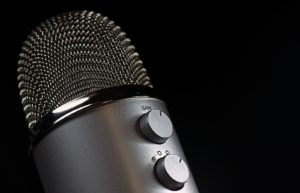 Inform your followers of new episode releases
Inform your followers of new episode releases
Each time that you release an episode, ensure that you share a new post to Facebook. Make the journey simple for your followers by including the episode’s web link directly in the post. As a tip, tag any guests that you have on your show to make it easy for them to share with their followers as well.
Personally engage with your following
When users comment on your posts, try your best to respond promptly and authentically. Stay true to the tone of your podcast and answer all questions thoroughly. You can also seek feedback from your followers and allow them to help steer the direction of your show. When people feel a more personal connection with you and your brand, they are more likely to continue tuning in to each new episode.
Now that you’re a Facebook pro, let us take care of the rest
The TalkShoe platform ensures that all of your behind-the-scenes podcasting needs are met, including unlimited hosting and storage - for free! With tons of cool features, we make sure that podcast hosts have everything that they need before taking their show to the social media masses and sharing their message with the world.
 Who exactly is listening to podcasts?
Who exactly is listening to podcasts?
In 2019, there are statistics and data available for almost anything that you could think of. Lucky for us, podcasting is no exception! If you have clicked on this blog post, I am guessing that you are interested in finding out what the data says about who exactly is listening to podcasts. Whether you are a current or aspiring host, this article will provide a concise summary of the latest statistics that answer this question (data provided is from the United States).
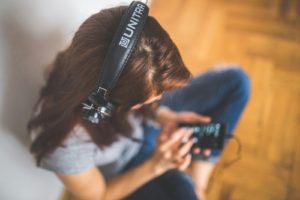 Who?
Who?
Between men and women, the divide is fairly equal with 56% being men and 44% being women. Podcast listeners are typically educated and have above-average incomes (over $75K).
51% of the population has listened to a podcast before with 22% listening weekly. With a population of over 300 million in the United States, this provides hosts with a massive potential audience.
What?
Of those who regularly listen to podcasts, the average person consumes 7 episodes per week and subscribes to 6 different shows. 80% listen to the majority of each episode with 35% listening to completion.
This is important to keep in mind when reviewing your own podcast’s stats to see if you are effectively keeping your audience engaged for the episode’s entirety. If not, what could you change to ensure that they are hanging on your every word?
 Where?
Where?
Although one might believe that the majority of listeners are tuning in during their morning commute, the statistics tell a different story. 49% of listeners are doing so from their homes while only 22% are doing so from their cars and 4% while on public transit.
When?
Podcasting is a medium that is rapidly gaining momentum and shows no signs of slowing down. A new article from Deloitte has found that the podcasting and audiobook markets are actually growing faster than the overall media and entertainment market. If you have been thinking about starting your own podcast, the time is definitely now.
Why?
Because podcasts are awesome! That’s why.
Want to get in on the action?
The statistics show just how much potential podcasts have for spreading your message to an incredibly large audience, so why not take advantage of this? With TalkShoe, we provide hosts with everything that they need to get started. With amazing features like FREE unlimited hosting and storage, we make podcasting both simple and affordable.
Your voice is an extremely powerful tool and when used properly, can make the difference between a dynamic and engaging podcast and one that is quickly passed over. This is something that many hosts do not give adequate attention to. Sure, content is incredibly important, but if you mumble or rush through your delivery, no one is going to tune in.
Follow the tips below and I guarantee that your voice will convey your message in a way that will pull your listeners in.
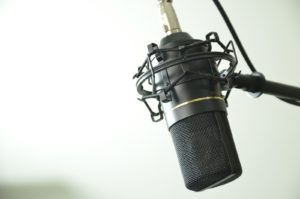 Start with your posture
Start with your posture
Sit up straight. This sounds like a no-brainer, but it is often forgotten in practice. When you slouch or hunch your back, the muscles involved in vocal projection tense up and can strain your voice. This prevents you from speaking clearly.
Distance yourself from the mic – a bit
The instinct of many people is to have their mouths so close to the microphone that they are almost touching it. This is too close! I recommend 4 inches away for the best audio quality. However, each mic is different so you will need to test this out – especially if you are using the built-in mic on your computer.
Speak slowly and clearly
When people know they are being recorded, the tendency is often to speed up their speech and rush through delivery. Take time to pronounce each word carefully so that nothing is missed by your listeners, and they are easily able to hang onto your every word.
 Be conscious of “um”
Be conscious of “um”
Although you might not notice yourself using this space-filler in everyday conversations, it is quite apparent when overused in a podcast. Be mindful of this once you hit the record button and don’t be afraid of a few seconds of silence while you gather your thoughts. Trust me - your listeners prefer this!
Practice out loud
Do a few test recordings beforehand to make sure that your content comes out sounding the way you intended. This exercise gives you a chance to catch yourself saying “um” too often or rushing through your sentences. If you notice this before you start, you can be mindful of it when it is finally time to hit record.
Put it all into practice - with TalkShoe!
Now that you are ready to start recording, why not make the most of all of the free features and benefits that TalkShoe has to offer podcast hosts like yourself? With unlimited hosting and storage, this platform takes care of it all!
Finding that your mic at home just isn’t cutting it? If you live in Toronto, you can come down to the TalkShoe recording studio in stackt market and use ours!
 Sam Laliberte is the Host and Producer of the Freedom Lifestyle podcast - a show that is empowering the movement and entrepreneurial shift towards flexible work. Sam has been working remotely and traveling the world as a Digital Nomad for the last two years and throughout her journey, created "Launch a Podcast on a Budget". She has been running this workshop for aspiring podcasters in Toronto and also offering it online.
Sam Laliberte is the Host and Producer of the Freedom Lifestyle podcast - a show that is empowering the movement and entrepreneurial shift towards flexible work. Sam has been working remotely and traveling the world as a Digital Nomad for the last two years and throughout her journey, created "Launch a Podcast on a Budget". She has been running this workshop for aspiring podcasters in Toronto and also offering it online.
We interviewed Sam in this latest blog post to uncover some of the podcasting tips you can expect from her course.
Q: How long have you been helping podcast hosts?
A: I launched my podcast in November of 2017 and for the last year I have been helping aspiring podcasters online and in Toronto launch shows of their own!
Q: How do you recommend choosing a topic for a new podcast?
A: No topic is too niche – seriously! There are podcasts about EVERYTHING. Find a topic that’s going to keep you engaged as the key to success with podcasting is consistency and sticking with it.
What are the topics you want to learn more about? What do you love talking about or sharing? What’s something unique you could bring to a podcast listening experience? These are the questions I would start with and then follow up with some market research to know what other shows exist on this topic. For a few more tips, you can check out TalkShoe’s recent blog post on this subject!
Q: Should hosts have a co-host or a guest on each episode? Or can they record alone?
A: Personally, I like to mix it up and create different types of content! While the majority of my episodes are interview style, I’ve also recorded solo ones that focus on my own story and insights. What’s great about having guests on your show is that you’re always offering your listeners a new perspective and can diversify your content more. When it comes to recording solo episodes though, the responsibility falls on you to create compelling content each time.
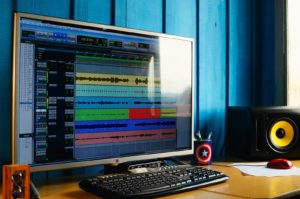 Q: Do you need professional recording equipment in order to record a podcast?
Q: Do you need professional recording equipment in order to record a podcast?
A: I like to refer to podcasting equipment as the “core four” needed to produce a show. You’ll need: a mic, editing software, a hosting provider and distribution channels.
Most of these you can get for free - like through TalkShoe’s all-in-one podcasting platform - but the one thing I always recommend is a professional microphone to capture quality audio.
The type of microphone you need will depend primarily on whether you’ll have guests on your show (versus a solo podcast) and if so, whether you’ll interview them in person or remotely.
For in-person interviews, it’s important that you find a bi-directional microphone (records audio from both ends of the mic) so you can place it in between you and your guest(s). I personally use and recommend the Yeti ($150). It comes with a built-in stand and has a USB cable for connecting directly to your laptop.
If you’ll be doing a solo podcast or plan to conduct your interviews virtually, then you can get away with a slightly cheaper option. In this case I would recommend the Snowball (~$70).
Q: How long should each podcast be?
A: There’s no black or white answer here as it’s going to depend on the type of episode you’re creating and for whom. For example, interview episodes that cover someone’s story and various pieces of advice tend to be longer than a solo episode which might be focused on simply one topic. If you try making all of your episodes the same length you might find yourself having to cut out great parts of your conversations to save time or adding in lower quality content to fill it.
 Q: What is the best way to increase exposure of my podcast?
Q: What is the best way to increase exposure of my podcast?
A: Lean on your guests! Make it super easy for your interviewees or special co-hosts to promote the episodes they’re on by giving them all the promotional material ahead of time. Let them know when the episode will be going live and follow up that morning so that they feel like part of its release.
Don’t assume your guests will share the episode just because they’re on it - unfortunately not everyone will! By making the process simple for them and actually asking them to share, they’re much more likely to. This is a great way to tap into diverse audiences and attract new, loyal listeners.
Q: What is the number one piece of advice that you give to podcast hosts from all of your experience?
A: I’m saving that one for the workshop! You’ll have to join us in Toronto on Nov 26 or online at launchapodcastonabudget.com.
Come check it out!
Want to learn more tips and tricks from podcast expert Sam Laliberte? You’re in luck! On November 26th she is hosting a ‘Launch a Podcast on a Budget’ workshop in downtown Toronto! You do not want to miss this. Click here to register and use code “talkshoe” to save 20%!

 Do you ever catch yourself thinking about
Do you ever catch yourself thinking about  4. Advice
4. Advice 13. Starting A Business
13. Starting A Business As someone who regularly engages with new and first-time podcasters, I am frequently asked how much preparation should be done before hitting record. Often, these inquiries include a question about scriptwriting. Should episodes be completely scripted to ensure that material is covered as intended? Or, should they be recorded on-the-fly to sound more natural?
As someone who regularly engages with new and first-time podcasters, I am frequently asked how much preparation should be done before hitting record. Often, these inquiries include a question about scriptwriting. Should episodes be completely scripted to ensure that material is covered as intended? Or, should they be recorded on-the-fly to sound more natural? For those who are confident in their ability to think on their feet, the completely unscripted option is the right choice for you. One of the benefits is that your content does not come across as forced or monotone. It also leaves room for spontaneous inspiration and discussion during the podcast.
For those who are confident in their ability to think on their feet, the completely unscripted option is the right choice for you. One of the benefits is that your content does not come across as forced or monotone. It also leaves room for spontaneous inspiration and discussion during the podcast. The Basic Episode Plan
The Basic Episode Plan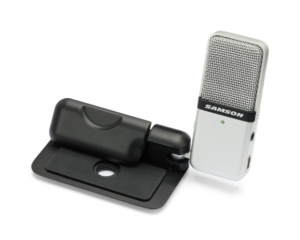 Samson Portable Go Mic
Samson Portable Go Mic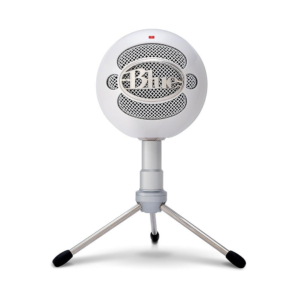 Snowball iCE
Snowball iCE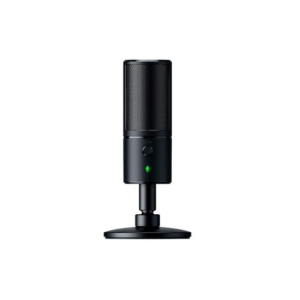 Seiren X
Seiren X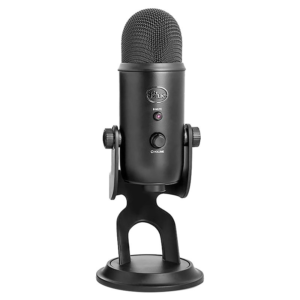 Blue Yeti
Blue Yeti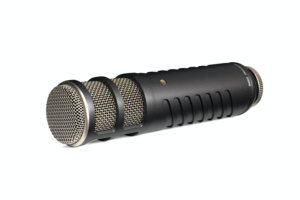 Procaster
Procaster RE320
RE320 Companies looking to reach the growing global podcast audience have been creating their own shows, known as branded podcasts. These podcasts are an extension of the brand and can be created for several important reasons such as thought leadership, having control over your brand, and creating positive engagement around your brand. Usually, these types of podcasts are created in-house and your company is fully responsible for the content, including any references to your brand’s products/services.
Companies looking to reach the growing global podcast audience have been creating their own shows, known as branded podcasts. These podcasts are an extension of the brand and can be created for several important reasons such as thought leadership, having control over your brand, and creating positive engagement around your brand. Usually, these types of podcasts are created in-house and your company is fully responsible for the content, including any references to your brand’s products/services. By starting a branded podcast you have created another way for potential customers to interact with your brand. This can help your brand seem more approachable and for larger businesses this can be the key to being viewed as more personable. Another benefit is that you can tell your brand story to your audience over time (daily, weekly, monthly) through digestible podcast episodes. As long as you’re creating high-quality podcast content on topics your audience cares about, you’ll be able to deliver your message to them consistently.
By starting a branded podcast you have created another way for potential customers to interact with your brand. This can help your brand seem more approachable and for larger businesses this can be the key to being viewed as more personable. Another benefit is that you can tell your brand story to your audience over time (daily, weekly, monthly) through digestible podcast episodes. As long as you’re creating high-quality podcast content on topics your audience cares about, you’ll be able to deliver your message to them consistently. Branded podcasts can be part of your company’s marketing arsenal. They can be used alongside your other forms of content marketing and lead generation to help the company become a thought leader on a specific topic. This strategy will drive a lot of traffic to your website and product offerings. As a result of this content, your sales have the potential to increase.
Branded podcasts can be part of your company’s marketing arsenal. They can be used alongside your other forms of content marketing and lead generation to help the company become a thought leader on a specific topic. This strategy will drive a lot of traffic to your website and product offerings. As a result of this content, your sales have the potential to increase. Podcast conferences are an excellent opportunity to interact with and learn from other like-minded individuals involved in the podcasting industry. Featuring special guests and keynote speakers, these events can benefit both aspiring and seasoned podcasters alike. Speaking from personal experience, we highly recommend checking out one of our following top 5 picks for MUST attend podcasting conferences in 2020.
Podcast conferences are an excellent opportunity to interact with and learn from other like-minded individuals involved in the podcasting industry. Featuring special guests and keynote speakers, these events can benefit both aspiring and seasoned podcasters alike. Speaking from personal experience, we highly recommend checking out one of our following top 5 picks for MUST attend podcasting conferences in 2020. Podfest Multimedia Expo
Podfest Multimedia Expo Podcast Movement
Podcast Movement They can be listened to while on-the-go
They can be listened to while on-the-go There are podcasts about EVERYTHING
There are podcasts about EVERYTHING Create a “Page” for your podcast
Create a “Page” for your podcast Inform your followers of new episode releases
Inform your followers of new episode releases Who exactly is listening to podcasts?
Who exactly is listening to podcasts? Who?
Who? Where?
Where? Start with your posture
Start with your posture Be conscious of “um”
Be conscious of “um” Sam Laliberte is the Host and Producer of the
Sam Laliberte is the Host and Producer of the  Q: Do you need professional recording equipment in order to record a podcast?
Q: Do you need professional recording equipment in order to record a podcast? Q: What is the best way to increase exposure of my podcast?
Q: What is the best way to increase exposure of my podcast?
